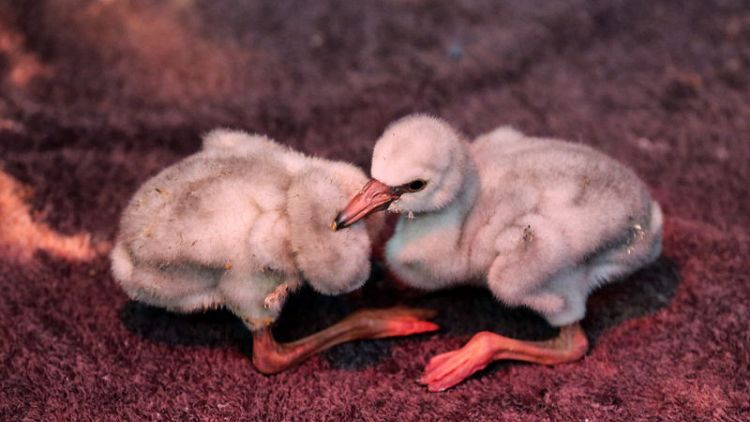CAPE TOWN (Reuters) - Rescuers are moving hundreds of dehydrated Lesser Flamingo chicks from their breeding ground at a drought-stricken South African dam to a bird sanctuary in Cape Town, to save them from death by starvation and lack of water.
Their birthplace, Kamfers Dam in the Northern Cape, is one of only three breeding grounds for the famously pink birds in Southern Africa, the other two being in Namibia and Botswana, according to researcher Katta Ludynia.
The rescued chicks take three to four months to fledge, and it is not yet clear whether they will eventually be released back into the wild in Cape Town or transported back hundreds of km (miles) to their home in Kimberley, she said.
"There are still several thousand birds breeding in the dam in areas that still have water," said Katta Ludynia, research manager at the Southern African Foundation for the Conservation of Coastal Birds (SANCCOB).
"It now depends on the water levels whether these birds will pull through."
Ludynia said the sanctuary was caring for around 550 chicks, most of them dehydrated when they first arrived on Monday after being abandoned by parents who went off in search of food.
The chicks are being moved to the sanctuary by plane and road.
SANCCOB is one of several centres across South Africa caring for around 2,000 chicks that were rescued from the dam.
Although it hosts the biggest population of lesser flamingoes in southern Africa, Kamfers Dam, situated to the north of Kimberley, is often dry and depends mainly on rain water. It also gets some water from a sewerage works that releases water into its wetlands.
"The dam in Kimberley is so important because it is manageable, so we can secure the water level there and that might be the only site the flamingoes can breed in Southern Africa, if the drought continues in other areas," Ludynia said.
(Reporting by Mike Hutchings and Sumaya Hisham; writing by Wendell Roelf; editing by James Macharia, William Maclean)
